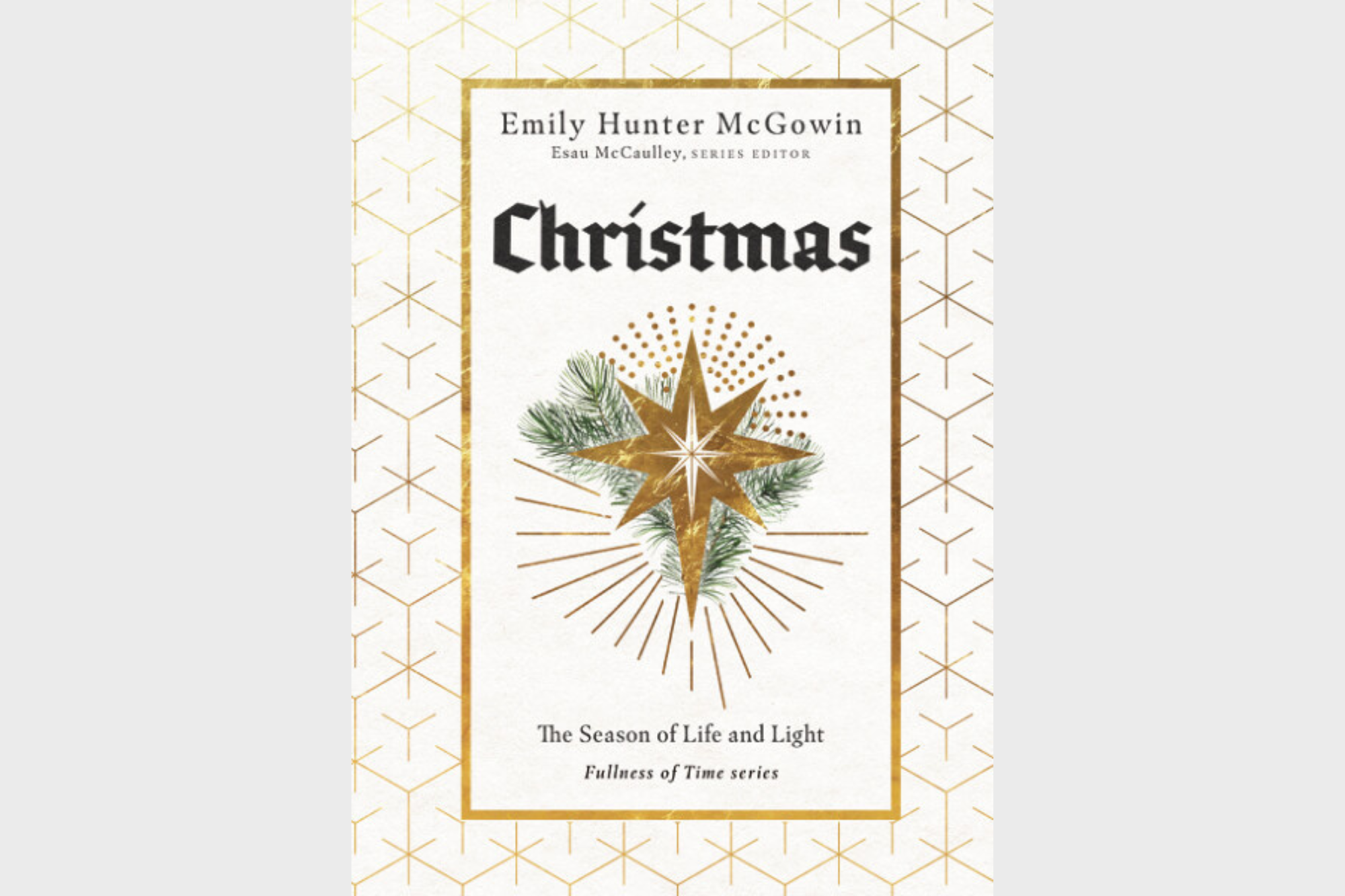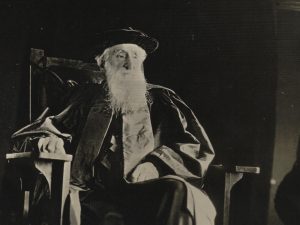An excerpt from “Christmas: The Season of Life and Light”
At the Church of the Nativity in Bethlehem, you can go and see the small patch of earth where, according to tradition, the Virgin Mary gave birth to Jesus. The Greek Orthodox and Armenian Apostolic churches currently maintain the site. You have to descend countless stone stairways and traverse labyrinthine passageways, past rich brocades and hanging lamps, to reach the hallowed cave. I have not visited it myself, but I’m told the grotto smells of damp earth and burning oil while the air reverberates with the sounds of chanting and singing from the many chambers above. Beneath the main stone altar, a fourteen-point silver star surrounds a circular hole marking the spot where, according to the Latin inscription, “Jesus Christ was born to the Virgin Mary.” To touch the mark, you are forced to kneel and crouch, leaning beneath a fringed satin drape to place a finger into the hole. Within the recess, according to tradition, lies the stone on which Mary lay as she pushed the infant Christ into the world.
Most of us will never see the Grotto of the Nativity or celebrate Christmas in Manger Square. But it is good to recall that the place Christ was born is not simply a soft-focused backdrop to our favorite Christmas stories and hymns but a living, vibrant place with an ongoing Christian community. Today Bethlehem is no longer a small village but has about twenty-five thousand inhabitants and occupies a central place in the religious life of Palestinian Christians. Though it’s been over 2,000 years, the humble arrival of the Son of God continues to capture imaginations today. When we seek to draw near to the mystery of Christmas—as we are doing with this small book—we’re joining a millions-strong procession of other Christians from all over the world who have been worshiping the newborn king for millennia.
I didn’t have this global perspective when I was a child. An ocean away from Bethlehem and in a nonreligious home, I grew up knowing little about Christmas. But I still considered it my favorite holiday—and not just because of the presents. Somehow I knew there was something extraordinary happening from sundown Christmas Eve to sunup Christmas Day. I could feel in my bones the “deep magic” in the celebration of Christ’s birth—as though my young body sensed in Christmas a point of rendezvous for God and humankind. Once the Holy Spirit found me and brought me into Christ’s church, Christmas took on even more significance. Like Saint Augustine, I was drawn to faith in Christ through the marvelous beauty of the Word made flesh—that the Son “of the Father’s love begotten” was born of a virgin in a backwater Middle Eastern town. It was the most magnificent story I had ever heard. It still is.
Yet for all my love of Christmas, it remains difficult to write about. For most of us, the season is hopelessly intertwined with sentimentality, nostalgia and commercialism. Christmas overflows with vivid memories—some good and some not so good—and elevated expectations—some healthy and some not so healthy. Like Dr. Seuss’s Grinch perched on Mount Crumpit, our respective imaginations have loaded the Christmas “sleigh” with a surplus of sights, smells, sounds, and tastes: soft candlelight, aromatic wassail, singing choirs, decadent pies and puddings, the crinkle of shiny wrapping paper, and much more.
Even though Christmas belongs to the universal church that spans the globe, there’s no denying that those of us living in the West experience the season in ways decidedly different from, for instance, the Palestinian Christians gathered in Bethlehem’s Manger Square. We know instinctively that Christmas is more than shopping mall Santas, silver bells, and snow-flocked trees, but such things are so entangled with our impressions of Christmas that it’s hard to know where those things end and Christmas—the real-deal, traditional, transcultural season of the church year—begins. What are we to do?
The first thing is to acknowledge that this is our reality and do our best, by God’s grace, to make our peace with it. There’s simply no way to fully disentangle Christmas from our embodied and encultured experiences of it. We must pursue an understanding and appreciation of Christmas in the midst of our memories, expectations, and hangups. After all, at the center of the mystery of Christmas is the astonishing fact that God has come to dwell with us. God has seen fit to grace our world with God’s presence—not just once but for all time—in Jesus Christ. So God’s loving embrace extends to our particulars—noses and toes, meals and gifts, decorations and gift-giving. Even if we could leave our embodied existence and all its memories behind, God would not have us do so. It is precisely the real stuff of daily life—even the heavily commercialized season of Christmas—that God means to redeem in Christ. As Madeleine L’Engle says in her poem “First Coming,” “He did not wait for the perfect time. He came when the need was deep and great … He came with Love: Rejoice! Rejoice!”
Despite the sentimentality surrounding Christmas, its focus—and the focus of the whole liturgical calendar—is the triune God. To give ourselves to the observance of the church year is to give ourselves to an education, a formative submersion, in the Trinity. Each season reveals something more of God’s truth, goodness, and beauty (though the fullness of God we will never fully comprehend). Christmas reveals to us the God of the great exchange, the God of the poor, the God of creation and re-creation, the God of life and light, the God of the crèche and the cross. “He came with Love,” indeed, and we are compelled to worship and serve him in return. Christmastide offers us one more way to do so.
The beauty of the liturgical calendar is that it provides a substantial length of time to prepare to approach the mystery of Christmas. We call this time Advent. But preparation for Christmas was not the original focus of Advent. Early in the church’s history, Advent was primarily concerned with the second coming of Christ—looking beyond history’s horizon to the final judgment of all things. In its modern iteration, though, Advent tends to be observed as preparation for Christmas, even as it retains the emphasis on watching and waiting for Christ’s return. Advent calls our attention to the prolonged anticipation of God’s people both for the first and second comings of the Messiah. And by engaging in practices of repentance during Advent, our bodies and souls are prepared for the celebratory practices of worship and feasting during Christmas.
Many of us may find it easier to participate in Advent (and Lent, its springtime complement). Human life is marked by suffering, and celebration doesn’t always come easily to a people acquainted with sorrow and hope deferred. Despite the gains of modernity, the dreadful beasts of conquest, war, famine, plague, and death continue to stalk the earth. And now with the help of mass media we are perhaps more aware than ever of the breadth and depth of the anguish they inflict. No amount of money or power can shield us from the vulnerability of being human. Sickness, heartbreak, and loss, it seems, are the price we pay for existence. Nevertheless, the church calendar ensures that, no matter how long and dark our Advent, the season of waiting always gives way to the season of wonder. By God’s abounding grace, Christmas still arrives every year—somehow or other, it comes just the same.
Taken from Christmas by Emily Hunter McGowin. ©2023 by Emily Hunter McGowin. Used by permission of InterVarsity Press. www.ivpress.com.
Do Good:
- Read “Christmas: The Season of Life and Light” (IVP Formatio, 2023) by Dr. Emily Hunter McGowin.
- Hear more from the author in the Do Gooders Podcast Episode 168 Appreciating the Deep Magic of Christmas with Dr. Emily Hunter McGowin.
- You’ve probably seen the red kettles and thrift stores, and while we’re rightfully well known for both…The Salvation Army is so much more than red kettles and thrift stores. So who are we? What do we do? Where? Right this way for Salvation Army 101.












